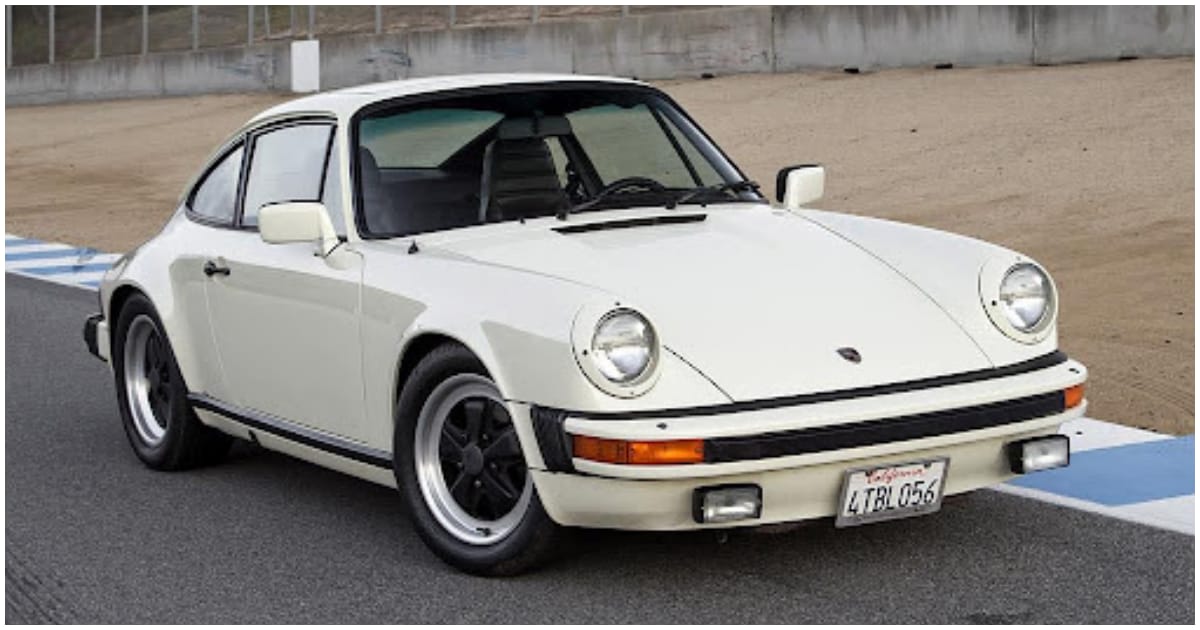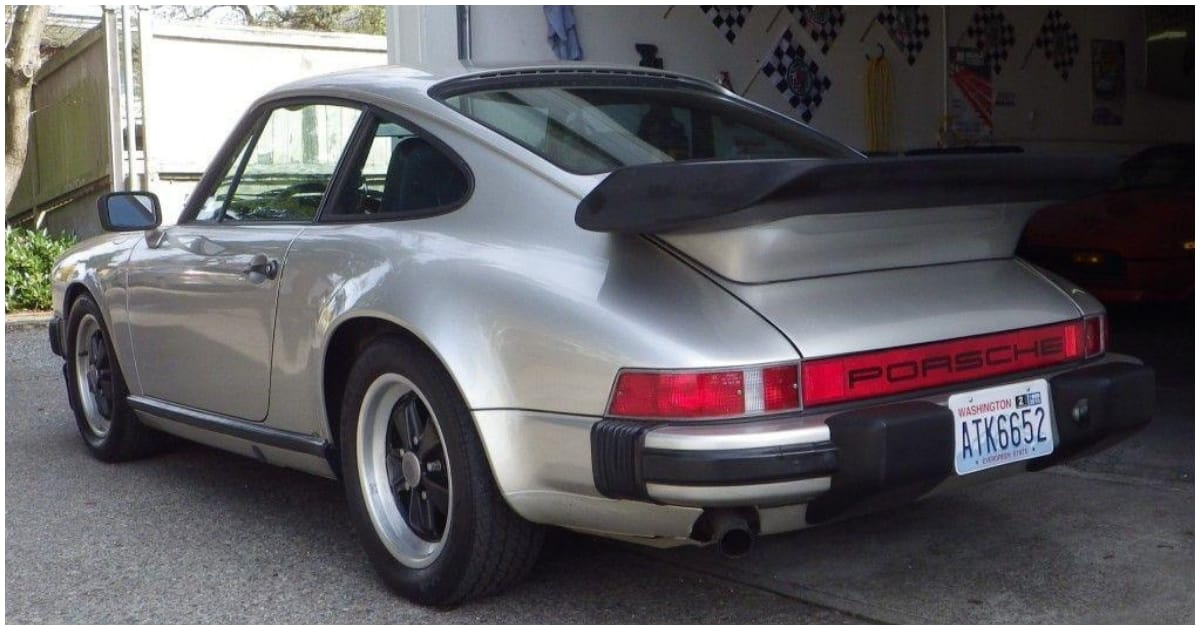By David Van Epps · November 3, 2025
✨ A Tale of Two 911s
When Porsche introduced the 911 SC (“Super Carrera”) in 1978, it signaled a return to confidence — improved reliability, accessible performance, and the car that would define the late air-cooled era.
But not every SC was built the same. Between the versions designed for the U.S. market and those sold to the Rest of the World (ROW), Porsche made several technical and cosmetic changes that remain points of debate among enthusiasts and collectors today.
There was a time when US buyers seemed to shy away from purchasing Porsche’s ROW production models. As these cars have become collectable and the passage of time has eliminated the most stingent emissions and federal regulation considerations, an ROW car is absolutely worth a look.
⚙ Technical Differences
Engine & Performance
U.S. cars: 3.0-liter flat-six rated around 180 hp, fitted with catalytic converters, air pumps, and oxygen sensors to meet U.S. emissions standards.
ROW cars: freer-breathing engines with higher compression (≈9.8:1), delivering up to 204 hp by 1981–83 — a noticeable improvement in throttle response and acceleration.
Both used the same 915 five-speed gearbox, though ROW cars feel a bit livelier due to roughly 60–70 lbs less weight.
Emissions & Weight
U.S. cars carried additional emissions hardware, adding complexity and slightly dulling the exhaust note. ROW cars were simpler and more mechanical in character.
🔧 Cosmetic & Equipment Differences
US Model
Front: – Sealed-beam headlights. “Sugar Scoops”
Rear - Rear bumper with large overriders


ROW Model
Front - H4 headlights with replaceable bulbs, slimmer and more integrated look.
Rear - Slimmer Euro-spec rear overriders


Side Marker / Indicator Differences
U.S. cars: amber side marker lights
ROW cars: small fender-mounted turn indicators
🏎 Driving Character
Behind the wheel, both SCs deliver the classic air-cooled 911 experience — light front end, rear-engine balance, and a mechanical feel missing from modern cars.
But there’s a distinct personality split:
ROW cars feel sharper and more responsive, the higher compression engine pulling harder above 4,000 rpm.
U.S. cars are a bit smoother, quieter, and better equipped from the factory for comfortable cruising.
For purists seeking the “raw” 911 experience, the ROW SC is the pick of the litter.
💸 Prices (as of 2025)
Condition will dictate the actual pricing on any air-cooled 911. As it relates to the SC, you should expect to pay somewhere between $50-$65K for either car in good “driver quality” condition. Currently the ROW cars generally command a 10–15% premium thanks to their performance edge and cleaner design.
Highly original cars with low miles, beautiful original paint and interior, or restored cars with fresh documented engine rebuilds, new paint and interiors, considered to be in excellent condition can sell for significantly more, with some examples bringing over $100K.
📏 Verdict
With both versions now well-established in the U.S. collector market, choosing between them depends on what you value most:
For driver engagement and purity, the ROW 204 hp model wins easily.
For comfort, parts interchangeability, and everyday refinement, a U.S. SC remains a superb option.
Either way, the 1978–1983 Porsche 911 SC stands as one of the most dependable, accessible, and rewarding air-cooled 911s ever built — a car that beautifully bridges classic character and modern usability.
— David Van Epps
🏁 Ferrari 296 Speciale: Special Enough? Or Just Special-ish?
By Tim Harris · November 3, 2025
I was offered one of the very first Ferrari 296 Speciales in the U.S. Early allocation, red-carpet delivery, bragging rights baked in.
And I passed.
Why? Because the 296 Speciale doesn’t move the needle far enough beyond the 296 GTS we already own. And if you’ve lived through Ferrari’s true golden era of “Speciales,” you know what’s missing.
🏆 Back When “Speciale” Really Meant Something
I’ve owned a 430 Scuderia and a 488 Pista, and I’ll tell you flat out: those cars were different animals from their base siblings.
The 430 Scuderia was co-developed with Michael Schumacher himself. Seven-time F1 champion, Ferrari’s golden boy. His fingerprints were literally on the chassis, the tuning, the philosophy. You could feel it every time you turned the wheel.
Same story with the 458 Speciale — Schumacher’s input shaped that car too. It wasn’t marketing fluff; it was a direct infusion of F1 DNA into a road car.
These cars weren’t just prettier versions of the base model with lighter wheels. They were sharper, rawer, and clearly carrying race-to-road hardware.
The 296 Speciale? It looks the part, it sounds the part, but it doesn’t feel like a generational leap. It feels like… an option package.
💸 Ferrari Math: Wallet Pain Edition
Ferrari lists the 296 Speciale’s base U.S. MSRP at $470,364 + $5,000 destination. Call it ~$475K.
That’s $135,000 more than a 296 GTB.
It’s also more than the entire cost of a new Porsche 911 Carrera.
Lamborghini’s Temerarario Alleggerita? A relative bargain at $431,767 (if you can say that with a straight face).
The options list is pure comedy: carbon wheels = $32K, “special color” paint = $65K. Real-world Speciales will hit $600K+ without breaking a sweat. With tariffs and dealer markup, $500K+ base isn’t fantasy, it’s Tuesday.
⚖️ Weight Loss: The $100K Diet Plan
Ferrari brags about the Speciale’s 1,410 kg (3,109 lb) dry weight, versus the GTB’s 1,470 kg (3,240 lb). On paper, that’s a 60 kg (132 lb) win.
But here’s reality:
Those numbers are dry weights (no fluids, no AC, no creature comforts).
To actually achieve 1,410 kg, you must spec every carbon-fiber option Ferrari offers — doors, panels, flicks, windows — roughly $100K in extras.
Add back fluids, comfort spec, and your post-lunch driving weight, and the real-world difference shrinks to 25–30 lb.
Congratulations, you just spent six figures to delete the equivalent of a Thanksgiving turkey from your curb weight.
📰 The Maranello Whisper Campaign
Every journalist who drove the Speciale at Fiorano “accidentally” leaked the same rumor: Ferrari already has a car coming above the Speciale.
Translation: today’s “Speciale” is tomorrow’s “mid-tier.” That’s a tough look for resale. Owners will end up with something better than a base 296, but not “the best.” And Ferrari’s never been shy about flooding the pool with “limited” cars. Why wouldn’t they?
🏁 Ferrari vs Porsche: Who’s Really Winning
Ferrari’s current “Speciales” are largely about exclusivity, design tweaks, and carbon invoices.
Porsche’s GT division, meanwhile, is handing out road cars that share real parts with their race cars. The GT3 RS is basically a track weapon wearing license plates. Suspension links, aero, cooling — the DNA is homologation, not marketing.
Back in the Scuderia/Pista era, Ferrari had that same aura. Today, Porsche has stolen the crown for “road-legal race cars.”
✅ My Verdict
The 296 Speciale is sharp, fast, and undeniably Ferrari. If you buy one, you’ll love it.
But for me? I’m keeping my 296 GTS. It’s 90% of the experience for 60% of the price — and I get a roof that comes off.
After owning cars like the Pista, Scuderia, and knowing Schumacher’s fingerprints shaped the Scud and the 458 Speciale, I can’t pretend this new car hits the same heights. It doesn’t.
So will I step out of Ferrari’s “Speciale” game? Probably. Because when the most exciting thing about your special edition is the option list, it’s time to re-evaluate. Porsche has won this war, and I’m happy appreciating what I already have.
— Tim Harris
🏁 The Full Throttle Talk Team

